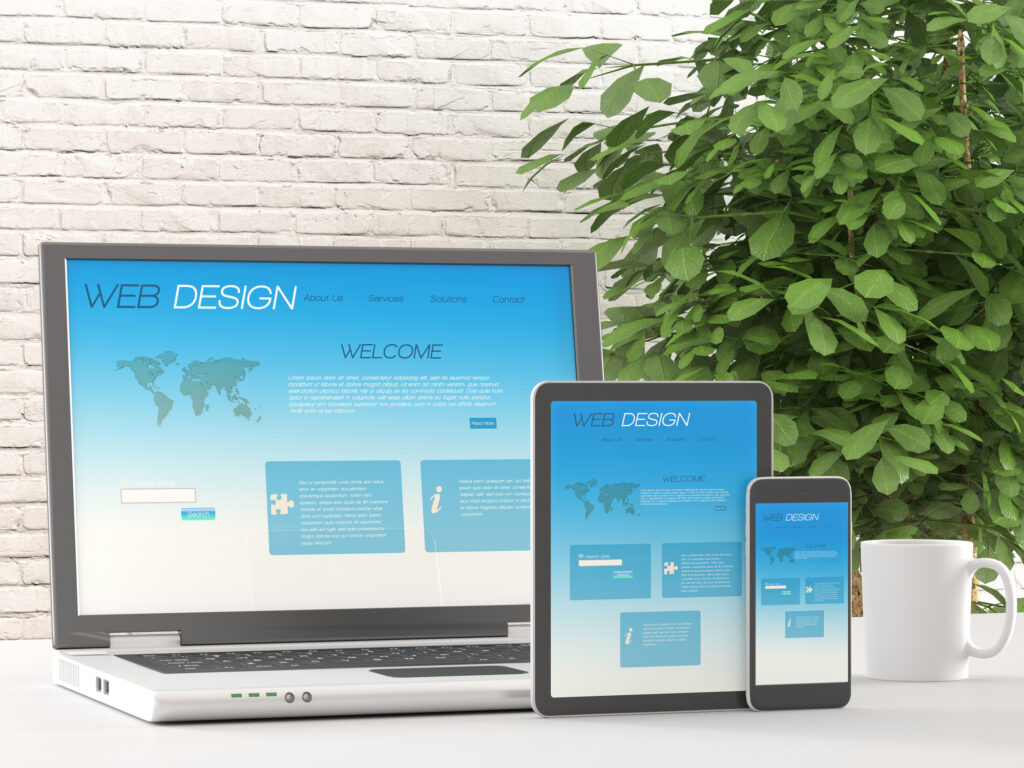In the expansive realm of the internet, web design serves as the blueprint shaping our online encounters. From sleek minimalism to vibrant interactivity, it plays a pivotal role in crafting visually appealing and user-friendly websites. In this post, we’ll explore the intricate world of web design, uncovering its essence, significance, and the key elements contributing to compelling digital spaces.
1. Grasping the Essence of Web Design
Web design is more than arranging pixels on a screen; it’s an art and science blending aesthetics with functionality. At its core, it involves conceptualizing, planning, and building a website’s visual elements—layout, color schemes, typography, and interactive features—to enhance the overall user experience.
A. Visual Appeal and Aesthetics:
Fundamentally, web design focuses on creating a visually captivating interface. Thoughtful use of colors, images, and typography conveys brand identity, eliciting desired emotional responses. A well-designed website not only grabs attention but also communicates professionalism and credibility.
B. User Experience (UX) and Functionality:
Beyond aesthetics, web design prioritizes the user experience (UX). Intuitive navigation, clear calls to action, and responsive design contribute to a positive user experience, ensuring the website is both visually pleasing and easy to navigate.
2. Key Elements of Web Design
A. Layout and Structure:
The website’s layout determines element arrangement, from headers to content sections. A well-organized layout enhances readability and guides visitors seamlessly. Grid systems, responsive design, and visual element placement contribute to an effective layout.
B. Color Theory:
Colors, chosen strategically to align with brand identity, influence emotions and perceptions. Consistent color use enhances brand recognition and contributes to a cohesive visual identity.
C. Typography:
Font choices significantly impact design aesthetics. Readability, hierarchy, and consistent font choices convey information effectively. Web designers often blend font styles to create a visually pleasing typographic hierarchy.
D. Images and Graphics:
Visual elements, such as images and graphics, play a crucial role in conveying messages and enhancing the user experience. Careful selection and optimization strike a balance between aesthetics and page loading speed.
E. Responsive Design:
In the era of diverse devices, responsive design is non-negotiable. Adapting layouts and content for optimal viewing across devices ensures a seamless user experience.
3. Web Design’s Role in Branding
A. Establishing a Strong Visual Identity:
Web design is a powerful tool for building and reinforcing a brand’s visual identity. Consistent use of colors, logos, and visual elements creates a recognizable brand image.
B. Creating Trust and Credibility:
Professionally designed websites instill trust in visitors. Clear navigation, professional imagery, and a well-structured layout contribute to building trust with the audience.
4. Trends Shaping the Future of Web Design:
A. Minimalist Design:
Minimalism, emphasizing simplicity and ample white space, enhances visual appeal and contributes to faster loading times.
B. Dark Mode:
Dark mode, reducing eye strain, is a popular trend catering to user preferences and enhancing accessibility.
C. Micro-interactions:
Subtle interactive elements, like button animations and hover effects, contribute to a dynamic and engaging user experience.
D. 3D Elements and Illustrations:
Advancements in technology allow the integration of 3D elements, adding depth and realism to the digital space.
Conclusion:
Web design remains a dynamic aspect of creating meaningful online experiences. From color selection to typography and responsive design, every element plays a crucial role in shaping user interactions. As technology evolves, web designers continue pushing creative boundaries, ensuring the online world remains visually captivating and user-friendly. Ultimately, web design is a harmonious blend of art and functionality, leaving a lasting impression on visitors and contributing to the success of businesses in the digital era.












